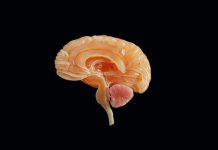
Researchers at the Keck School of Medicine of USC have unveiled a groundbreaking study that suggests small high-density lipoprotein (HDL) particles in the cerebrospinal fluid could be linked to brain health and possibly Alzheimer’s prevention.
The study has been published in Alzheimer’s & Dementia: The Journal of the Alzheimer’s Association.
Key Findings
Two significant indicators suggest that higher levels of these small HDL particles may offer protection against Alzheimer’s:
Better Cognitive Performance: Individuals with higher levels of small HDL particles performed better on cognitive tests.
Increased Amyloid Beta 42: Higher circulating levels of amyloid beta 42 peptide in the cerebrospinal fluid are linked to a lower risk for Alzheimer’s disease.
The study involved 180 healthy participants, averaging nearly 77 years old. Researchers analyzed their blood plasma and cerebrospinal fluid, and a subset of 141 participants also took cognitive tests.
Using ion mobility, a sensitive technique, researchers counted and measured the size of individual HDL particles.
The Role of HDL in Brain Health
HDL particles contribute to the sheaths that insulate brain and nerve cells, aiding rapid communication. They also play a crucial role in neuron growth and repair, as well as in reducing inflammation at the brain-blood barrier.
Apolipoprotein E (ApoE) Connection
The ApoE protein is essential for these small HDL particles to function in the brain. Notably, the APOE4 gene, a variant of the ApoE gene, is the strongest known risk factor for Alzheimer’s. T
he study strongly ties in with recent discoveries that show a more diverse role for ApoE in the brain, especially its APOE4 variant.
Future Research
The researchers plan to delve deeper into the structure and function of ApoE HDL particles.
They aim to study its interaction with Alzheimer’s risk over time, considering other influencing factors like medication and other diseases, including diabetes.
This pioneering research by Hussein Yassine, M.D., and his team, shifts the focus from merely understanding the protein plaques in Alzheimer’s to exploring how lipids interact with these proteins.
“People are realizing that there is more to late-onset Alzheimer’s disease,” said Yassine. The findings present a fresh direction for Alzheimer’s research, focusing not just on amyloid and tau proteins but also on lipids and ApoE.
This could lead to new preventative strategies and treatment modalities targeting small HDL particles in the brain.
If you care about Alzheimer’s disease, please read studies about Fruit sugar and Alzheimer’s disease: What you need to know and findings of New study reveals link between iron and Alzheimer’s disease.
For more information about brain health, please see recent studies about how Alzheimer’s disease is treated, and results showing alternative drug strategies against Alzheimer’s disease.
The research findings can be found in Alzheimer’s & Dementia.
Follow us on Twitter for more articles about this topic.
Copyright © 2023 Knowridge Science Report. All rights reserved.



